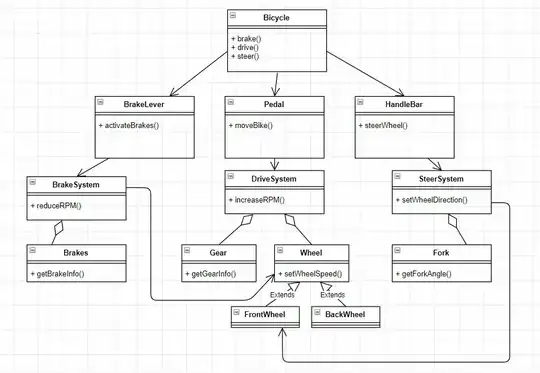So I was given a task of making a class diagram for a bicycle. I know what a class diagram is and the concepts behind one.
The requirement is that the bike can brake, turn or speed up. Now to me, a bike has three major components: the brake system, drive system and steering system. And each system has each own activators for actions: a brake handle, a pedal and a handlebar.
For my bike to actually brake, I need to go through the brake lever to trigger my brake system (pass data on how hard the lever is squeezed from the lever to the brake system). Same for the other two systems as well. This is what I've come up with so far:

My question: Is there a better way to illustrate the connection between the activators and the systems they're supposed to pass data to?